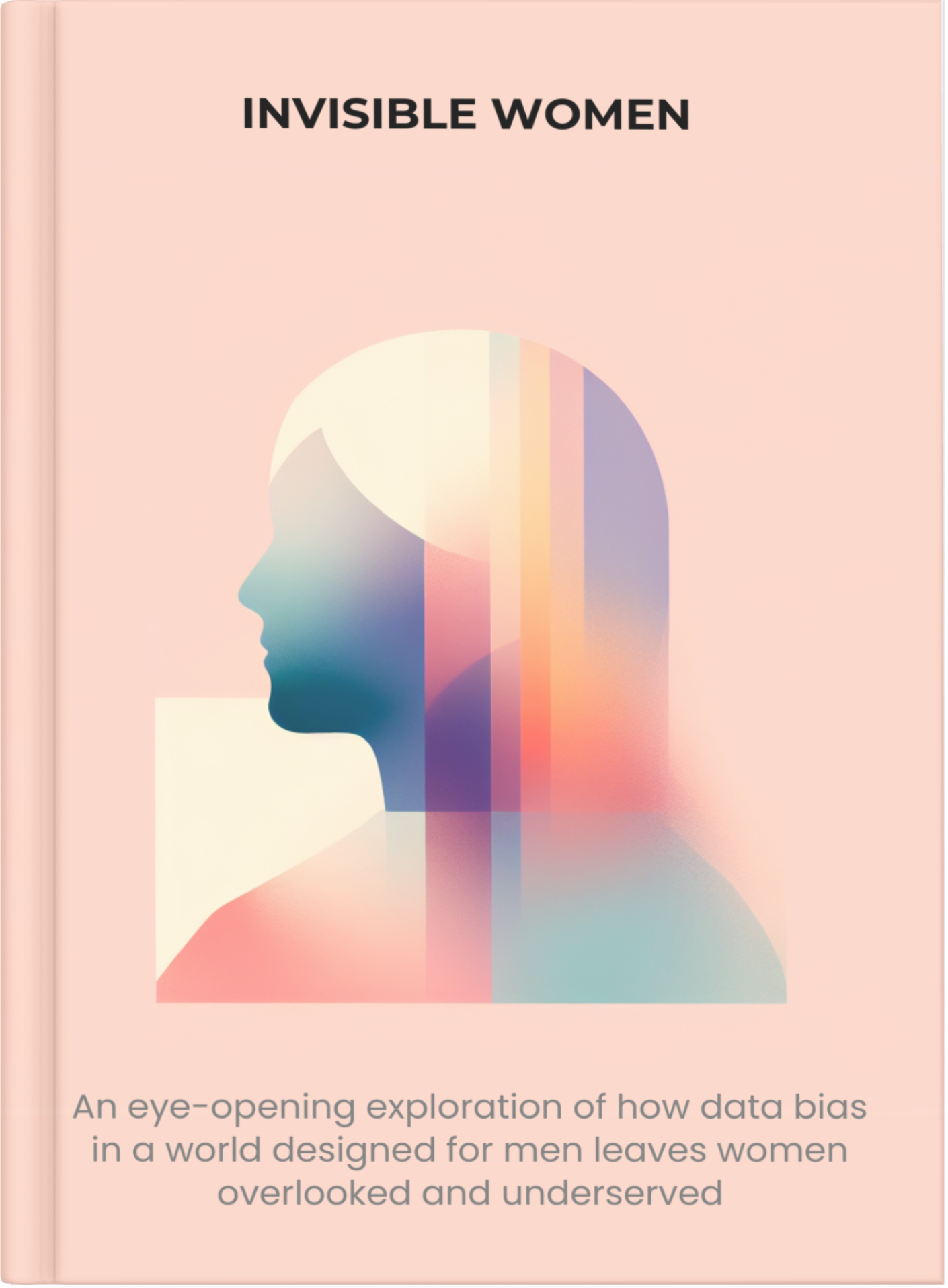
Invisible Women
Caroline Criado Perez
Invisible Women by Caroline Criado Perez explores the gender data gap and how the lack of data on women affects various aspects of life, from healthcare to economics. The book highlights the systemic bias in data collection and analysis, which often overlooks women's experiences and needs, leading to a world designed primarily for men.
0:000:00
Keypoint 1: The Gender Data Gap
The Gender Data Gap refers to the systemic lack of data on women and their experiences in various fields. This gap exists because historically, data collection and analysis have been predominantly male-centric, often overlooking or underrepresenting women. This oversight has significant consequences, as it leads to a world designed primarily for men, ignoring the specific needs and experiences of women.
One of the primary reasons for the gender data gap is the assumption that data collected from men can be universally applied to women. This assumption is flawed because men and women often have different experiences, needs, and responses to various situations. For example, in medical research, the majority of clinical trials have historically been conducted on male subjects, leading to a lack of understanding of how diseases and treatments affect women differently. This can result in misdiagnoses, inappropriate treatments, and a general lack of knowledge about women's health issues.
The gender data gap is also evident in economic data. Traditional economic models often fail to account for unpaid labor, which is predominantly performed by women. This includes tasks such as childcare, eldercare, and household chores. By not recognizing the value of this unpaid labor, economic policies and decisions are skewed, often disadvantaging women and perpetuating economic inequality.
In the workplace, the gender data gap manifests in various ways, such as the lack of data on women's career progression, pay disparities, and workplace harassment. Without accurate data, it is challenging to address these issues effectively. For instance, pay gap analyses often fail to consider factors such as part-time work, career breaks, and the undervaluation of roles typically held by women.
Addressing the gender data gap requires a concerted effort to collect and analyze data that accurately represents women's experiences. This involves rethinking data collection methods, ensuring diverse representation in research, and challenging the assumption that male experiences are the default. By closing the gender data gap, we can create a more equitable world that considers the needs and experiences of all individuals, regardless of gender.
One of the primary reasons for the gender data gap is the assumption that data collected from men can be universally applied to women. This assumption is flawed because men and women often have different experiences, needs, and responses to various situations. For example, in medical research, the majority of clinical trials have historically been conducted on male subjects, leading to a lack of understanding of how diseases and treatments affect women differently. This can result in misdiagnoses, inappropriate treatments, and a general lack of knowledge about women's health issues.
The gender data gap is also evident in economic data. Traditional economic models often fail to account for unpaid labor, which is predominantly performed by women. This includes tasks such as childcare, eldercare, and household chores. By not recognizing the value of this unpaid labor, economic policies and decisions are skewed, often disadvantaging women and perpetuating economic inequality.
In the workplace, the gender data gap manifests in various ways, such as the lack of data on women's career progression, pay disparities, and workplace harassment. Without accurate data, it is challenging to address these issues effectively. For instance, pay gap analyses often fail to consider factors such as part-time work, career breaks, and the undervaluation of roles typically held by women.
Addressing the gender data gap requires a concerted effort to collect and analyze data that accurately represents women's experiences. This involves rethinking data collection methods, ensuring diverse representation in research, and challenging the assumption that male experiences are the default. By closing the gender data gap, we can create a more equitable world that considers the needs and experiences of all individuals, regardless of gender.

